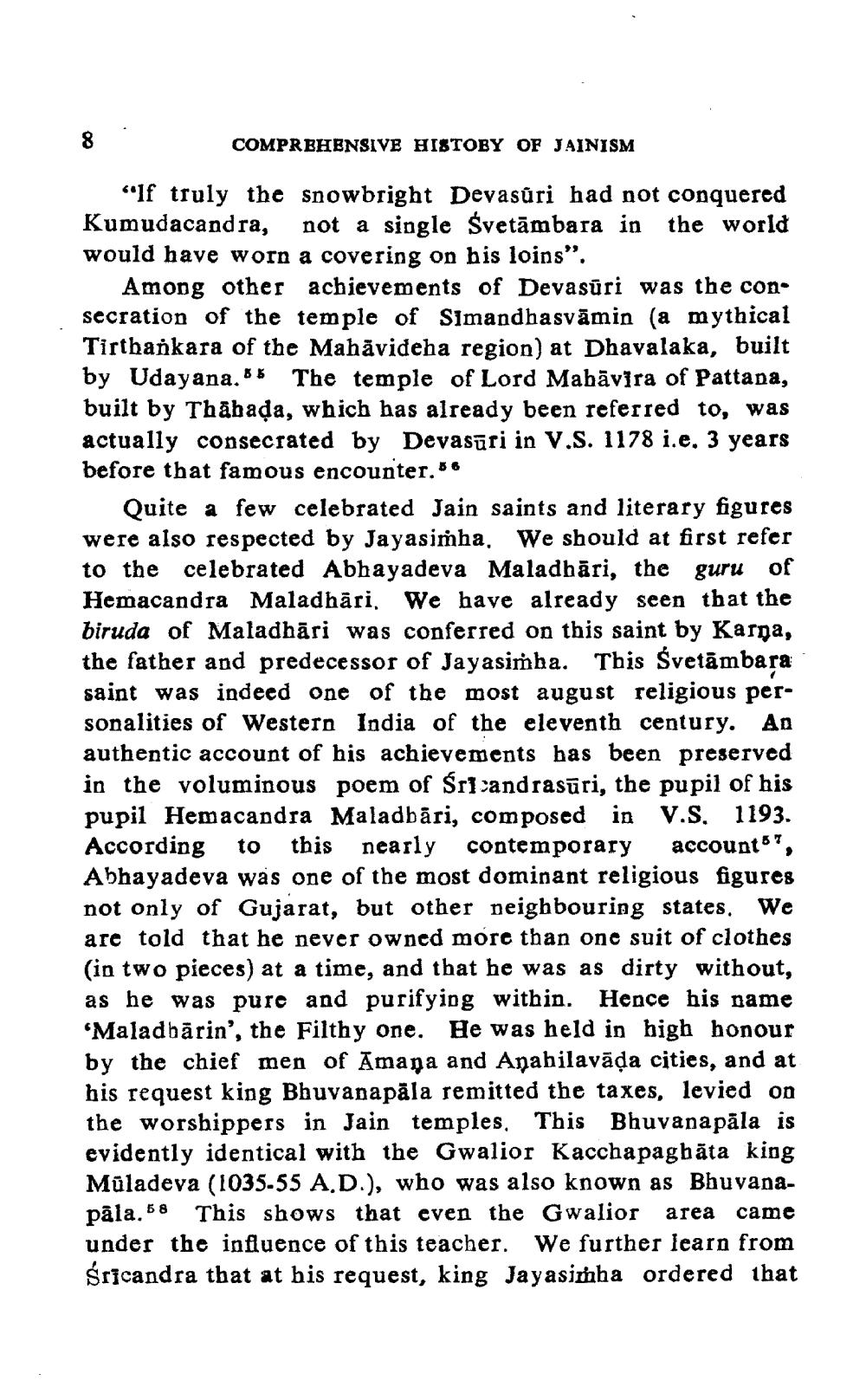________________
COMPRBHENSIVE HISTOBY OF JAINISM
"If truly the snowbright Devasűri had not conquered Kumudacandra, not a single Svetāmbara in the world would have worn a covering on his loins".
Among other achievements of Devasūri was the con• secration of the temple of Simandhasvāmin (a mythical Tirtbankara of the Mahāvidena region) at Dhavalaka, built by Udayana.85 The temple of Lord Mabāvīra of Pattana, built by Thābada, which has already been referred to, was actually consecrated by Devasūri in V.S. 1178 i.e. 3 years before that famous encounter."
Quite a few celebrated Jain saints and literary figures were also respected by Jayasimha. We should at first refer to the celebrated Abhayadeva Maladbāri, the guru of Hemacandra Maladhāri. We have already seen that the biruda of Maladhāri was conferred on this saint by Karna, the father and predecessor of Jayasiṁha. This Śvetāmbara saint was indeed one of the most august religious personalities of Western India of the eleventh century. An authentic account of his achievements has been preserved in the voluminous poem of Sr]-andrasūri, the pupil of his pupil Hemacandra Maladbāri, composed in V.S. 1193. According to this nearly contemporary accounts, Abhayadeva was one of the most dominant religious figures not only of Gujarat, but other neighbouring states. We are told that he never owned more than onc suit of clothes (in two pieces) at a time, and that he was as dirty without, as he was pure and purifying within. Hence his name 'Maladbārin', the Filthy one. He was held in high honour by the chief men of Amaņa and Anahilavāda cities, and at his request king Bhuvanapāla remitted the taxes, levied on the worshippers in Jain temples. This Bhuvanapāla is evidently identical with the Gwalior Kacchapaghāta king Müladeva (1035-55 A.D.), who was also known as Bhuvanapāla.58 This shows that even the Gwalior area came under the influence of this teacher. We further learn from Śricandra that at bis request, king Jayasimha ordered that




